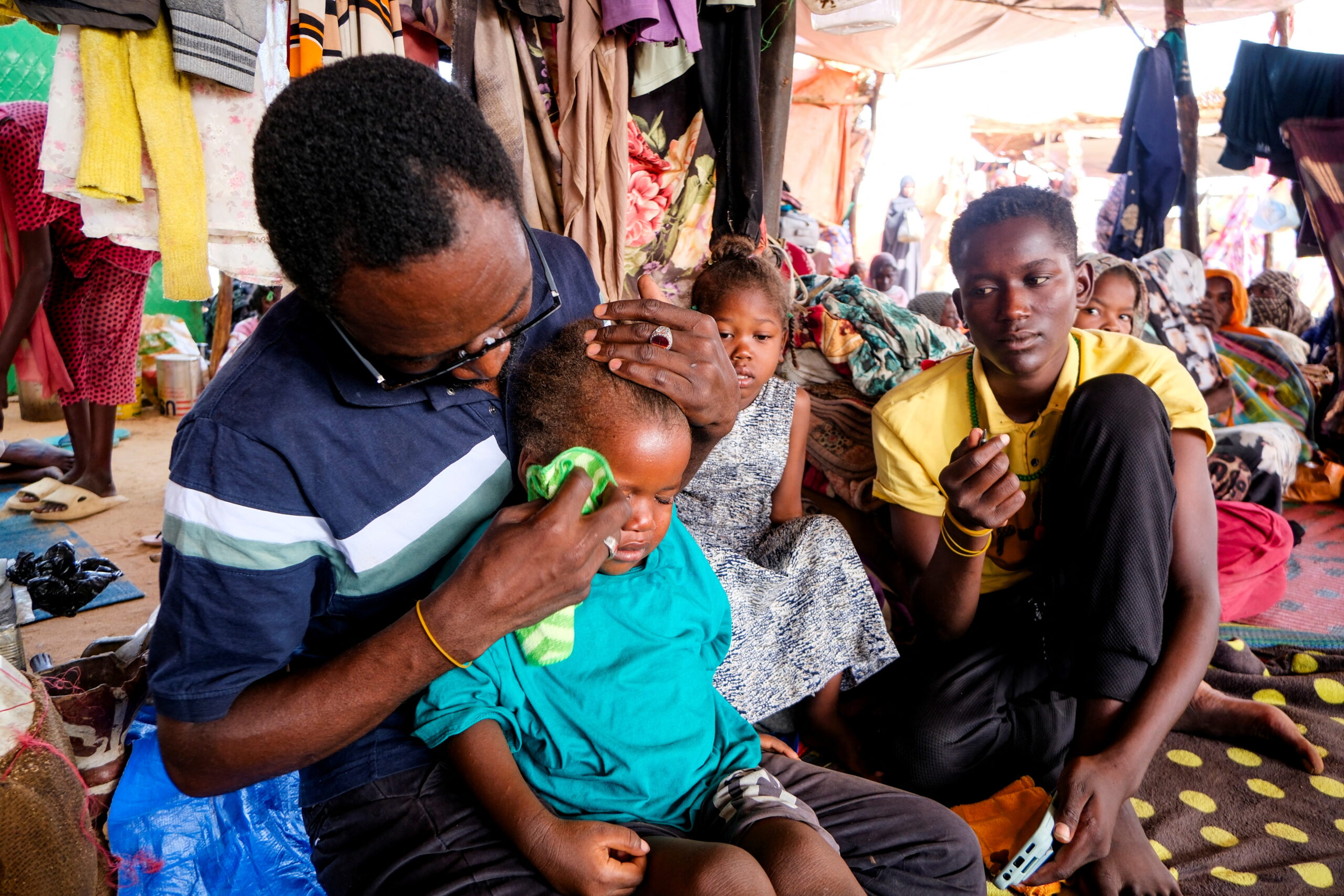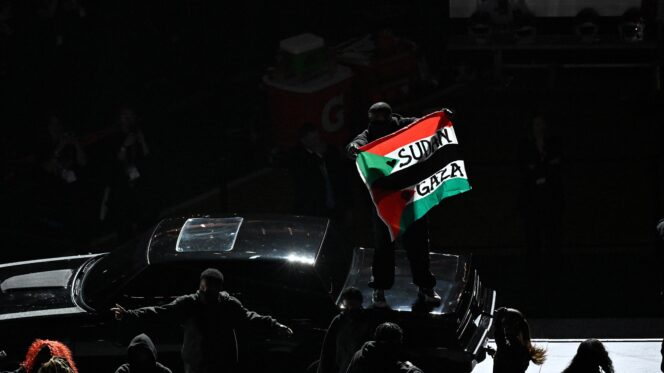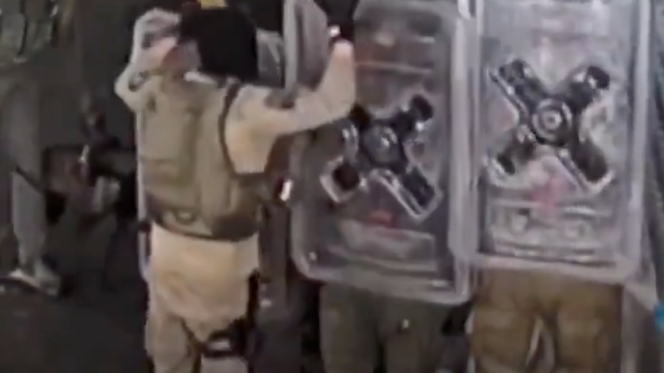Gulf States and Warring Militias Alike Are Profiting From War in Sudan
A grotesque economic logic.
by Joshua Craze
14 November 2025

At the end of October, El Fasher, the last city in Darfur not controlled by the Rapid Support Forces (RSF), fell after an 18-month siege. Conditions in the city were already dire, after the RSF blocked humanitarian access, forcing El Fasher’s starving population to eat animal feed. A communications blackout means that much that occurred during the final assault on El Fasher remains uncertain, but the videos that are available – recorded by RSF fighters – are terrifying.
In one, an RSF commander walks between men prostrate on the ground, shooting them in the head. Dozens were executed on the berm that the RSF had used to encircle the city. At its last functioning hospital, fighters went room-to-room, killing patients. Some 200,000 people remain trapped in El Fasher.
The horrors unfolding in Darfur are the grimmest episode yet in Sudan’s civil war, which began in April 2023, and has pitted the RSF against their former paymasters in the Sudanese Armed Forces (SAF). Sudan was already experiencing the world’s worst displacement crisis – more than 12 million people have fled their homes – and a humanitarian catastrophe, with some two-thirds of the population in urgent need of assistance, even as the country’s humanitarian appeal is only 25% funded.
Sudan’s agonies contain a grotesque economic logic. The RSF profits from El Fasher’s charnel houses. It held some of those that tried to flee hostage, ransoming them to their relatives. Others, it charged exorbitant fees for transport out of the city. Goods looted from El Fasher soon ended up at markets in Nyala, South Darfur. Such profiteering has been a constant of the conflict.
The violence currently scarring the country is not unprecedented, but rather the latest episode in a long-standing pattern of military elites profiting from the immiseration of Sudanese civilians. The RSF was formed from the ‘Janjaweed’ militias that conducted a brutal counterinsurgency in Darfur during the early 2000s, during which it developed its playbook of egregious sexual violence, extrajudicial executions, and the seizure of land and property from its victims.
The militia became a praetorian guard for the Sudanese dictator Omar al Bashir, who took power in a coup in 1989 and ruled the country for 30 years. Bashir built up a hydra’s head of rivalrous security services, including the RSF, each of which had their own economic empires. Under its leader, Mohammed Hamdan Dagalo, also known as Hemedti, the RSF controlled lucrative gold mines in Darfur and exported mercenaries to Yemen on the Saudi and Emirati payroll.
Bashir was toppled by popular protests in 2019. A transitional government was formed that saw civilian politicians keep aloof company with Hemedti and Abdel Fattah al-Burhan, the leader of SAF. In 2021, Burhan and Hemedti seized control of the state in a coup. With the civilians pushed out of power, the SAF and the RSF, the two main forces in Bashir’s hydra, were increasingly at loggerheads. During discussions over security sector reform at the beginning of 2023, SAF demanded that the RSF integrate into the army. This would have been a death-knell for Hemedti, and conflict began.
By the end of the war’s first year, the RSF seemed to have the upper hand. It had consolidated control of Darfur – except El Fasher – and struck deep into the centre of Sudan, far from its Darfuri redoubts. Everywhere it went, the RSF destroyed state institutions and health facilities and engaged in widespread looting.
For some young RSF fighters, this was revenge. Since Sudan’s independence from Britain in 1956, the northern riparian cities around Khartoum have exploited the country’s peripheries, including Darfur, for labour and resources. In this rendering, RSF looting is simply returning to Nyala what was taken from it. However, the rhetoric doesn’t convince. The RSF has also looted Darfuri cities. The militia is rather a war machine, predicated on plunder.
The second year of the conflict saw SAF regroup. By the end of 2024, it had forced the RSF out of central Sudan, and by April 2025, had also retaken Khartoum, the nation’s capital, which the RSF had seized at the war’s onset. The army’s resurgence is partly due to its successful solicitation of foreign backers. Qatar, worried about the prominence of the Emirates, which have backed the RSF, has funded SAF’s purchase of fighter jets, while Egyptian military intelligence has assisted with targeting operations for the drones that have arrived from both Turkey and Iran.
In the second half of 2024, the pendulum swung back to the RSF. Flush with new drones and artillery from their Emirati patrons, the paramilitaries took not only El Fasher, but also strategically important cities in the Kordofans, en route to the capital.
These swings have been devastating for the Sudanese population, but have not given a definitive edge to either side. Sudan’s previous two civil wars (1955-1972 and 1983-2005) both lasted two decades, and both ended with negotiated settlements. It is impossible to envision how either side could win this war militarily. This does not mean that the conflict will end.
A popular narrative of the Sudanese conflict sees it as a ‘war between two generals’. This presumptive opposition hides the fact that both sides have profited from the war. The RSF and the SAF both export gold to the UAE, with annual exports doubling since the war began. Animal exports to the Gulf have also soared. Most of the livestock is Darfuri, but is exported via Port Sudan, the SAF administrative headquarters. The two sides collaborate in the destruction of the country, and both profit from it. Rather than seeing them as opposed, it is salutary to understand the two parties as a single war machine, which profits from the destruction wreaked on the Sudanese people.
Prior to the outbreak of war, international diplomatic efforts were focused on getting the military to agree to hand over power to the civilians. Now, all efforts are focused on the two belligerent parties, and the socially democratic agenda of the millions of Sudanese who brought down Bashir has been forgotten. In this, too, the war has also been a boon to the commanders.
Diplomatic attempts to get the two sides to agree to a ceasefire have been markedly unsuccessful. Recent US efforts at the end of October saw the US-sanctioned Algony Hamdan Dagalo, one of Hemedti’s younger brothers, lounging in the Waldorf-Astoria in Washington DC, even as artillery shells smashed El Fasher. Talks saw representatives of the SAF and the RSF meet members of the ‘Quad’ (the US, Egypt, the UAE and Saudi Arabia), but made little movement towards a humanitarian truce. The SAF are internally divided, with an Islamist faction backed by Turkey and Qatar profiting politically from the war, and disinclined to come to the table.
Internal divisions in both belligerent parties are exacerbated by external supporters. The RSF’s capture of El Fasher was driven by its Emirati patrons, who supplied it with new Chinese-made artillery, air-defence systems, drones and British-made vehicle engines, along with Colombian mercenaries, all of which arrived via Chad and the port of Bosaso, in Puntland. The UAE profits from the gold that the RSF mines in Darfur, but its investment in the militia group is broader than resource extraction.
Support to the RSF is part of a broader regional strategy in which the Emirates intends to become the kingmaker in the Horn of Africa. Already, it has armed Ethiopia, invested in ports on the strategically important Red Sea, and bought influence in Libya, Uganda, South Sudan and the Central African Republic.
SAF’s biggest backer remains Egypt, whose ruler – Abdel Fattah el Sisi – sees in the Sudanese army an analogue to his own military rule. Saudi Arabia, the Emirates rival on the Red Sea, has remained officially neutral but has largely backed SAF.
The assumption of international diplomats is that if only the regional powers involved in the conflict can be made to see that their interests are better served by a stabilised Sudan, then pressure can be put on the belligerent parties, their internal differences overcome and a ceasefire achieved.
The political economy of the current conflict augurs something more foreboding. Since 1989, when Bashir came to power, security services have captured the state and turned it to their own ends, diverting flows of economic resources into their own pockets, while profiting from the plunder and chaos that have defined Sudan’s wars. For the UAE and Saudi Arabia, just as for the SAF and the RSF, a divided, war-torn Sudan may prove easier to dominate than a unified country.
Joshua Craze is a writer for the New York Review of Books, n+1 and New Left Review, and has worked as a researcher for Small Arms Survey, the UN and Human Rights Watch.


